Ah, the call of the sea! Buying a used boat in Europe or elsewhere is an exciting adventure, but it requires method to avoid unpleasant surprises. Here are some tips to help you navigate this process with confidence, along with photo ideas to illustrate each step:
1. Clearly define your needs and your budget: The compass of your search
Before you even start browsing listings, take the time to precisely define the type of navigation you plan to do (coastal, offshore, inland), the number of people on board, the level of comfort you expect, and—most importantly—your total budget (purchase, potential transport fees, insurance, maintenance, mooring fees, etc.).

2. Explore the European market and beyond: A vast ocean of opportunities
Europe—and the world—offers a wide variety of used boats. Online platforms such as Boat24, Band of Boats, Yachtadvert, boat shows, and yacht brokers are excellent sources to find your hidden gem. Don’t hesitate to broaden your search geographically, as prices and availability can vary significantly from one country to another.
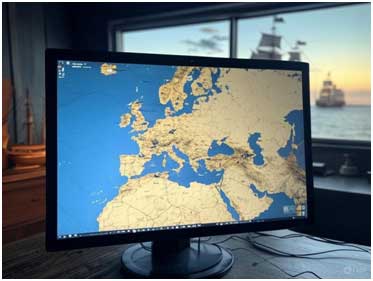
3. Preselection: The art of separating the wheat from the chaff
Examine listings carefully. Pay attention to the description, photos (ask for more if needed), the boat's age, maintenance history, and included equipment. Don’t hesitate to contact the seller for additional information.
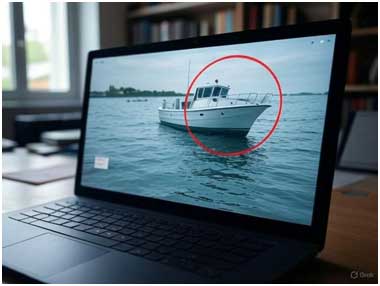
4. Inspection: The crucial moment of truth
If a listing catches your eye, schedule a visit. Ideally, bring a marine surveyor for a pre-purchase inspection. Carefully check the hull (osmosis, cracks), the deck (delamination), the engine (startup, sound, general condition), the sails and rigging, electronics, plumbing, and safety equipment. A sea trial is essential to evaluate the boat's behavior.
Yachtadvert Tip: to make sure you don’t forget anything during your inspection, download our PDF checklist “Used Boat Inspection.” It covers all the points to check before purchasing — from the deck to the engine bay — to validate your future boat step by step.
Use this printable checklist during your visit or on a tablet to review each important point before purchasing. For a more thorough inspection, consider being accompanied by a marine surveyor.
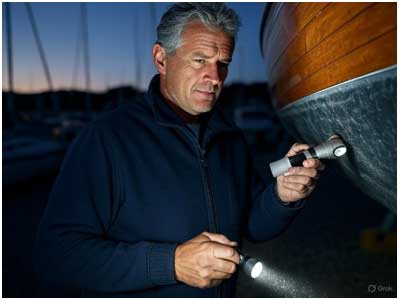
5. The paperwork: The boat’s “passport”
Carefully check the boat’s documents: proof of ownership, maintenance invoices, compliance certificates (CE marking), and proof of VAT payment (crucial in Europe!). Make sure there are no debts or liens attached to the boat.
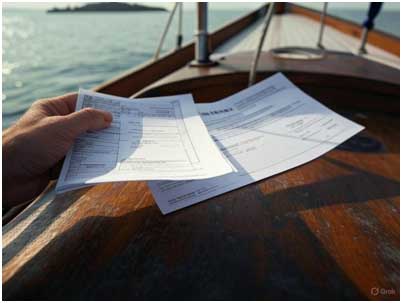
6. Negotiation and sales agreement: Seal the deal
Once satisfied with the inspection and paperwork, you can begin price negotiations. A written sales agreement specifying the terms of the sale is essential before proceeding with payment.

7. Finalizing the sale and registration: Last steps
Payment is usually made via secure bank transfer. You will then need to register the boat in your country of residence and take out insurance.
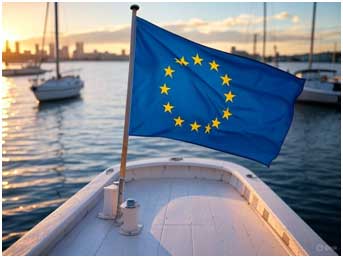
8. Transport and launch: The beginning of the adventure
If the boat is located in another country, organize its transport by sea or by road. Once it arrives at its destination, launching the boat marks the start of your sailing adventures!
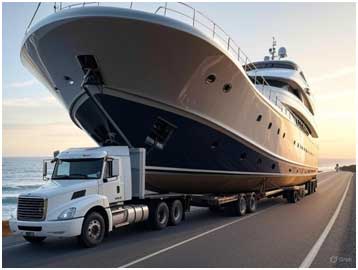
In summary, buying a used boat requires patience, rigor, and some technical knowledge. It’s also wise to be assisted by professionals such as a marine surveyor, a mechanic, and experienced yacht brokers who know the sellers well, understand why they’re selling, and can help you strike a good deal. Thanks to brokers, you'll often get a better price than by using free websites, which unfortunately attract careless or dishonest individuals.
By following these steps—and seeking assistance when needed—you’ll significantly increase your chances of finding your dream boat and fully enjoying the pleasures of sailing!
FAQ – Buying a used boat in Europe
What is the best country to buy a used boat in Europe?
The best countries to buy a used boat in Europe are often France, Italy, the Netherlands, Croatia, and Spain. These markets are large, well organized, and offer a wide variety of boats at competitive prices. The best choice also depends on the type of boat you’re looking for (sailboat, motorboat, catamaran, etc.).
How do I verify VAT when buying a boat in Europe?
When buying a used boat in Europe, it’s crucial to obtain proof that VAT has been paid—such as the original purchase invoice showing VAT or a tax certificate. Without proof, you may be required to pay VAT again when registering under a new flag.
Should I hire a marine surveyor when buying a used boat?
Yes, hiring a marine surveyor is highly recommended. They inspect the hull, engine, equipment, sails, and electronics, and identify any hidden defects. Their survey report is a valuable tool in negotiations and protects your investment.
Can I buy a boat abroad and register it in France?
Yes, you can absolutely buy a boat in another European country and register it in France, provided you have the required documents: proof of ownership, CE compliance certificate, proof of VAT payment, and a bill of sale. An official translation may be requested.
When is the best time to buy a used boat?
The best time to buy a used boat is usually at the end of the sailing season (autumn), when owners want to sell before winter storage. This is when you can get the best deals and have time to prepare for the next season.